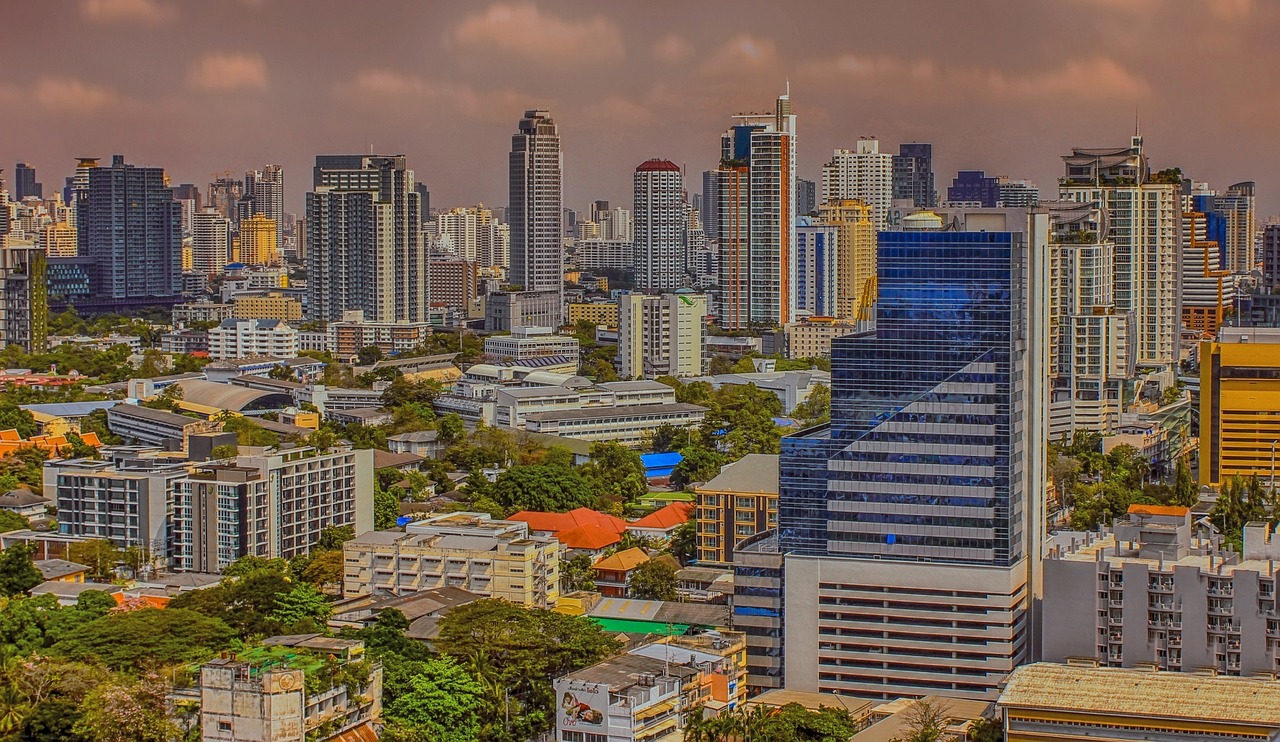Thailand is often touted as a budget traveler’s dream, and for good reason! While it’s true you can splurge on luxury resorts, Thailand truly shines for those who want to experience its vibrant culture and breathtaking landscapes without breaking the bank.
This comprehensive guide will show all international visitors, including those from the U.S., how to navigate Thailand affordably, stretching your currency further and ensuring an unforgettable adventure.
Why Thailand is Perfect for Budget Travelers
Thailand consistently ranks high for budget-friendly travel due to:
Affordable Accommodation: From cozy hostels to charming guesthouses, a comfortable stay won’t cost a fortune.
Delicious & Cheap Food: Street food is king, offering incredible flavors at unbelievably low prices.
Efficient (and Inexpensive) Transportation: Local buses, trains, and songthaews make getting around accessible.
Free or Low-Cost Activities: Many temples, markets, and natural attractions can be enjoyed for free or a minimal fee.
Favorable Exchange Rate: For currencies like the USD, your money goes a long way.
When to Go: Timing is Everything for Your Budget
The “best” time to visit often depends on your priorities. For budget travelers, aiming for the shoulder seasons or even the low season can lead to significant savings on flights and accommodation.
Peak Season (November – February): Dry, pleasant weather, but higher prices and larger crowds.
Shoulder Seasons (March – May, October): Good weather with fewer crowds and better deals. You might experience some heat in March-May.
Low Season / Rainy Season (June – September): The rainiest period, but prices for flights and accommodation can drop significantly, sometimes by up to 50%! While some ferry routes may be affected, many areas still offer fantastic experiences, often with lush green landscapes, fewer tourists, and vibrant local festivals.
Pro-Tip: Consider traveling during the low season if flexibility is key. Rain showers are often short bursts, leaving plenty of sunshine to enjoy. Plus, you’ll encounter fewer crowds at popular attractions.
You Might Also Like to Read:
- Your Guide to the Best Beaches & Hotels in Koh Chang, Thailand
- Plan Your Dream Trip: Top Thailand Travel Destinations & Tips
- Thailand for Foodies: A Culinary Journey Through Bangkok’s Street Food & Beyond
Visa Information for U.S. Citizens & Other International Tourists
For U.S. Citizens:
Good news! U.S. citizens carrying a tourist passport generally do not require a visa to enter Thailand for stays of fewer than 60 days. As of July 15, 2024, U.S. citizens are entitled to receive a 60-day visa upon entry for tourism purposes. Pre-arrival online registration is required. It’s strongly recommended that your passport be valid for at least six months beyond your arrival date to avoid potential denied entry.
If you wish to stay longer than 60 days, you can apply for an extension of up to 30 days at a Thai Immigration Bureau office for a fee (currently 1,900 THB). For stays longer than 90 days in any six-month period, you would generally need to obtain a visa from a Thai Embassy or Consulate prior to arrival.
For Other International Tourists:
Visa requirements vary significantly by nationality. Many countries have visa-exemption agreements with Thailand allowing stays of 30, 45, or 60 days. Some nationalities may need to apply for a visa in advance from a Royal Thai Embassy or Consulate in their home country or nearest jurisdiction.
Always check the latest visa requirements for your specific nationality with the Royal Thai Embassy or Consulate in your country well in advance of your travel dates. Regulations can change.
Accommodation: Sleep Smart, Save Big
Your accommodation choices will significantly impact your budget.
Hostels: The ultimate budget choice. Dorm beds can be found for as little as $5-10 USD per night, particularly outside major tourist hotspots. Many offer excellent facilities, social atmospheres, and even free breakfast. Look beyond just Khao San Road in Bangkok for better value and more authentic experiences.
Guesthouses & Budget Hotels: Often family-run, these provide private rooms with basic amenities (fan or AC, private bathroom) for $15-30 USD per night. Look for places slightly away from the main tourist hubs for better value.
Local Neighborhoods: In Bangkok, explore areas like Talat Noi or parts of Wat Ket and Wua Lai Street in Chiang Mai for more authentic and affordable stays compared to super-touristy areas.
Booking Sites: Use platforms like Agoda.com, Booking.com, and Hostelworld to compare prices and read reviews. Booking directly with smaller guesthouses can sometimes offer better rates.
Food: Eat Like a Local, Pay Like a Local
This is where Thailand shines for budget travelers!
Street Food: This is your best friend. A delicious, filling meal can cost as little as $1.50-4 USD. Look for bustling stalls with long queues – that’s usually a sign of good, fresh food. Don’t be afraid to try classics like Pad Thai, Som Tum (papaya salad), Green Curry, Khao Pad (fried rice), and Mango Sticky Rice.
Local Markets: Beyond street food, markets like Or Tor Kor in Bangkok or local morning markets offer fresh produce, prepared meals, and snacks at incredibly low prices.
Food Courts: Shopping mall food courts (e.g., Terminal 21 in Bangkok) offer a vast array of hygienic and budget-friendly Thai and international dishes. You often get a prepaid card, load money onto it, and then pay at individual stalls.
Avoid Western Chains: Fast food like McDonald’s or Starbucks is significantly more expensive than local Thai alternatives.
Refill Water Bottles: Instead of buying new bottled water every time, look for water refill stations, common in hostels and some shops, to save money and reduce plastic waste.
Transportation: Getting Around on a Dime
Getting around Thailand is surprisingly cheap.
Local Buses: The cheapest way to travel within cities (especially Bangkok). Non-air-conditioned buses are incredibly cheap (starting around USD 0.30), while air-conditioned buses are slightly more but still very affordable.
Songthaews: These red (or sometimes other colors) pickup trucks with two benches in the back are common in smaller towns and islands. They operate like shared taxis on fixed routes or can be chartered. Fares are usually $1-4 USD, depending on distance and negotiation.
Trains: A scenic and comfortable way to travel long distances, especially overnight. Overnight trains save you a night of accommodation. Tickets are very reasonable, ranging from $10-50 USD depending on class and route.
Tuk-Tuks: Iconic but can be pricey if you don’t haggle. Always agree on a price before you get in. For short distances, they can be fun, but taxis (with the meter always on) or ride-hailing apps (Grab, Bolt) are often more reliable and cost-effective.
Motorbike Taxis: Quick for short distances in traffic, but agree on a price beforehand and always wear a helmet.
Domestic Flights: While often pricier than buses or trains, budget airlines like AirAsia offer incredibly competitive fares, especially if booked in advance. For long distances (e.g., Bangkok to Chiang Mai or the islands), they can save valuable travel time.
Ferries & Longtail Boats: For island hopping, local ferries are much cheaper than speedboats. Look for package deals that combine bus and ferry travel.
Activities: Free & Frugal Fun
Thailand offers a wealth of experiences that don’t cost much.
Temple Hopping: Many temples (wats) are free to enter, though some major ones (like Wat Pho or Wat Arun in Bangkok) have a small entrance fee (typically $3-5 USD). Always dress modestly (shoulders and knees covered) when visiting temples.
Markets Exploration: Wander through vibrant markets (day and night markets) for incredible photo opportunities, people-watching, and cheap eats. Chatuchak Weekend Market in Bangkok is an experience in itself.
Beach Relaxation: Many of Thailand’s stunning beaches are free to access. Simply relax, swim, and soak up the sun. Railay Beach in Krabi, for instance, has no entrance fees.
Hiking & Nature: Explore national parks (some have entrance fees, usually $5-10 USD for foreigners), waterfalls (like Erawan Falls), and lush rainforests.
Cooking Classes: A fun and affordable way to learn about Thai cuisine. Many guesthouses offer classes for around $30-60 USD.
Walking Tours: Many cities offer free walking tours (remember to tip your guide!) or you can create your own using online maps and guides.
Ethical Elephant Sanctuaries: While not “cheap” (typically $80-150 USD for a day visit), consider allocating some budget to visit an ethical elephant sanctuary (especially in Chiang Mai) that prioritizes the welfare of elephants over tourist rides. Research thoroughly to ensure it’s genuinely ethical and does not offer riding.
Budget-Friendly Islands
While popular islands can be pricey, some offer great value:
Koh Lanta: Laid-back atmosphere with beautiful beaches and good value accommodation.
Koh Chang: One of Thailand’s larger islands, it offers diverse landscapes and generally more affordable options than Phuket or Koh Samui.
Koh Phayam: Closer to Myanmar, it’s less traveled and very budget-friendly with a relaxed vibe.
Koh Samet: Easily accessible from Bangkok, offering stunning, clear waters and affordable stays.
Koh Larn: A popular day trip from Pattaya, known for its beautiful beaches and water activities at reasonable rates.
Koh Kood: Relatively undeveloped with lush jungles and pristine beaches, perfect for escaping crowds on a budget.
General Money-Saving Tips
Haggle (Politely): In markets, for tuk-tuks, and sometimes guesthouses, a polite haggle is expected. Don’t overdo it, and always maintain a friendly demeanor.
Withdraw Large Sums: ATM fees can add up (often around 220 THB/~$6 USD per transaction). Withdraw larger amounts less frequently to minimize charges. Inform your bank of your travel plans.
Local SIM Card: Purchase a local SIM card (e.g., AIS, TrueMove, dtac) upon arrival at the airport or a convenience store. Data plans are very cheap ($6-15 USD for 5-10 days, or $15-30 USD for 30 days) and essential for navigation and communication.
Travel During Low Season: As mentioned, this is the biggest money-saver on flights and accommodation.
Pack Light: Avoid airline baggage fees by traveling with just a backpack. You can buy cheap clothes and toiletries in Thailand if needed.
Drink Local Beer: Thai beers like Chang and Leo are much cheaper than imported ones. Convenience stores (7-Eleven, FamilyMart) offer the best prices.
Learn Basic Thai Phrases: A few simple phrases (hello, thank you, how much?) can go a long way in building rapport and sometimes getting a better deal.
Use Ride-Hailing Apps: Grab and Bolt are popular and often cheaper and more transparent than street taxis, especially in Bangkok.
Thailand is an incredible destination that proves you don’t need a huge budget to have an enriching and unforgettable travel experience. By embracing local transport, savoring street food, and seeking out free or low-cost activities, you’ll discover the true heart of Thailand while keeping your wallet happy. Happy travels!





